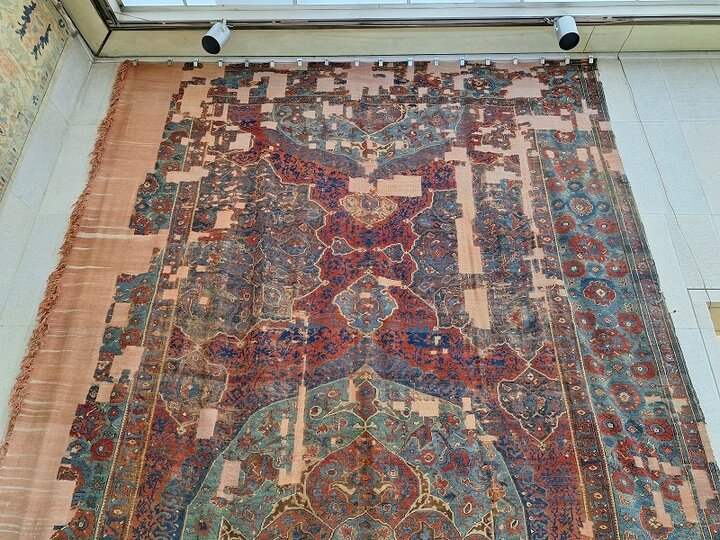Rare Persian carpets on show at National Museum

TEHRAN – The National Museum of Iran is currently playing host to an exhibition showcasing a stunning array of rare and exquisite carpets from the 17th century onward.
The exhibition primarily features relatively large-sized carpets, offering a glimpse into the intricate craft skills and rich cultural heritage associated with Persian carpet weaving.
Among the highlights of the exhibition are carpets handcrafted in Kerman, Kermanshah, and Soltanabad, each bearing distinctive motifs and designs reflective of their respective regions' artistic traditions.
Notably, a 17th-century carpet from the Ottoman era stands as a testament to the enduring legacy of carpet weaving across borders and centuries.
The sheer scale and number of carpets on display have necessitated their placement not only in the museum's upper galleries but also in various other sections dedicated to carpet exhibitions.
The exhibition, which opened its doors to the public recently, is set to run until February 23, providing ample opportunity for aficionados of Persian carpets and enthusiasts of art and culture to explore these timeless treasures.
Persian carpets are sought after internationally, with patterns in Persian gardens being arguably the most characteristic feature of them all. Weavers spend several months in front of a loom, stringing and knotting thousands of threads. Some practice established patterns. Some make their own.
Each Persian carpet is a scene that seems ageless, a procedure that can take as long as a year. These efforts have long put Iran’s carpets among the most complex and labor-intensive handicrafts in the world. When the weaving is finally done, the carpet is cut, washed, and put out in the sun to dry.
Throughout history, invaders, politicians, and even enemies have left their impact on Iran’s carpets. As mentioned by the Britannica Encyclopedia, little is known about Persian carpet-making before the 15th century, when art was already approaching a peak.
AM
Leave a Comment